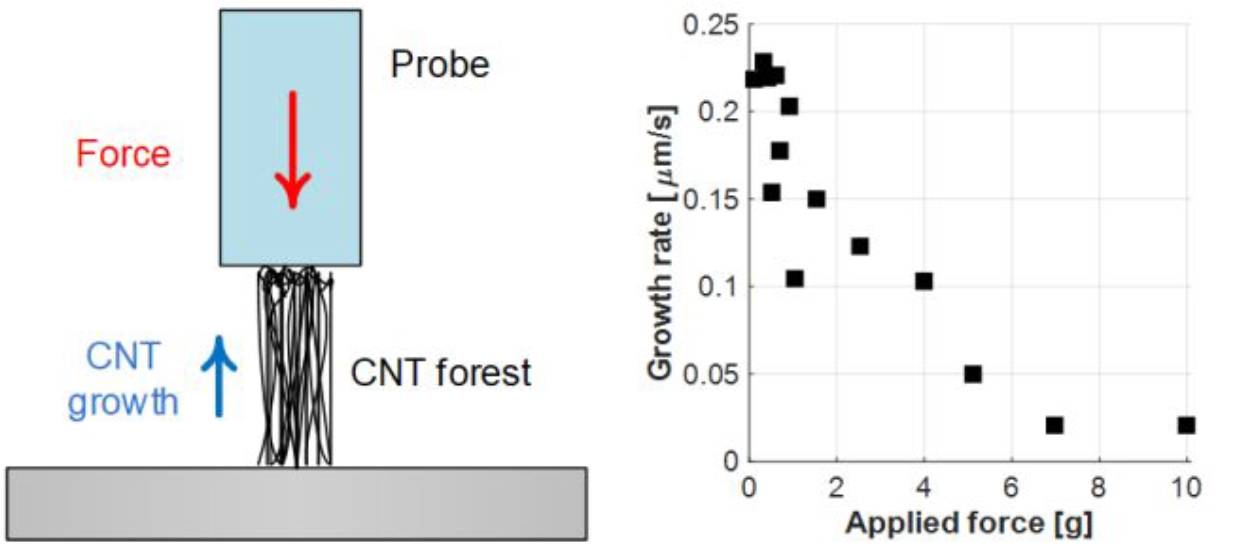
In Situ Mechanochemical Modulation of Carbon Nanotube Forest Growth
Chemistry of Materials
Year
2019Abstract
Ordered synthesis of one-dimensional nanostructures, such as carbon nanotubes (CNTs), involves competition between the growth kinetics of individual structures, their physical entanglement, and intermolecular forces that cause coupling of structures in close proximity. Specifically, CNT synthesis by chemical vapor deposition (CVD) can directly produce films and fibers by providing CNT growth sites in close proximity such that the CNTs self-align into macroscopic assemblies. Because CNTs are mechanically coupled during these processes, the question arises as to whether or not mechanical forces intrinsic to the formation of CNT ensembles influence the growth kinetics and quality of CNTs, as can be expected from fundamental theories of mechanochemistry. Here, we study how mechanical forces influence CNT growth by applying controlled compression to CNT forests in situ; and relate the outcomes quantitatively to the CNT morphology and lengthening rate. We find that applied forces inhibit the self-organization of CNTs into a forest and accelerate the termination of collective growth. By correlating in situ kinetics measurements with spatial mapping of CNT orientation and density by X-ray scattering, we find that the average growth rate of individual CNTs is also mechanically modulated; specifically, a 100x increase in force causes a ~4x decrease in average CNT lengthening rate. We attribute the slower growth kinetics to a stress-dependent increase of 0.02-0.16 eV in the effective activation energy for CNT growth. Via finite element modeling, we conclude that the force magnitudes that cause remodeling of the growing CNT network are less than the average strengths of adhesive contacts between CNTs. Last, we find that CNT growth rate and orientation can respond dynamically to changes in applied force, further demonstrating the mechanochemical nature of CNT growth and suggesting new approaches to control CNT quality and morphology in situ, with general application to other one-dimensional nanostructures.
Category: Journal Publications






